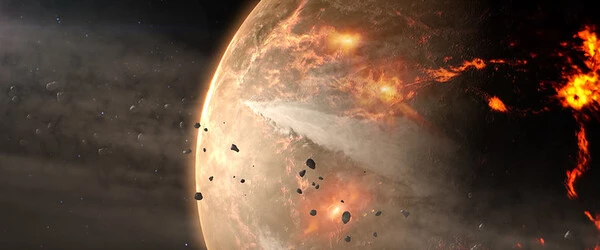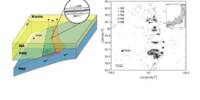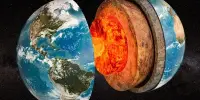The study of meteorites has revealed that Earth’s volatile elements, such as water, nitrogen, and carbon, likely came from the same region of the early solar system as the building blocks of the planet. These volatile elements were delivered to the early Earth by comets and asteroids, which formed in the cold outer reaches of the solar system and were rich in water ice, and other volatile compounds. The study of meteorites has provided valuable insights into the chemical composition of the early solar system and the origin of Earth’s volatile elements.
Imperial researchers have discovered the likely distant origin of Earth’s volatile chemicals, some of which are the building blocks of life, by analyzing meteorites. They discovered that asteroids from the outer Solar System, which includes the planets Jupiter, Saturn, and Uranus, accounted for roughly half of the Earth’s inventory of the volatile element zinc. Other important volatiles, such as water, are also expected to have been supplied by this material.
Volatiles are elements or compounds that, at relatively low temperatures, change from solid to liquid to vapour. They include water and the six most common elements found in living organisms. As a result, the presence of this material was critical to the emergence of life on Earth.
We’ve long known that some carbonaceous material was added to the Earth, but our findings suggest that this material played a key role in establishing our budget of volatile elements, some of which are essential for life to flourish.
Rayssa Martins
Previously, scientists believed that the majority of Earth’s volatiles came from asteroids that formed closer to the Earth. The findings provide important insights into how Earth came to have the unique conditions required for life to thrive.
Professor Mark Rehka?mper of Imperial College London’s Department of Earth Science and Engineering, the study’s senior author, stated: “Our data show that material from the outer Solar System, beyond Jupiter’s orbit, delivered roughly half of Earth’s zinc inventory. This was completely unexpected based on current models of early Solar System development.”
Previous research suggested that the Earth formed almost entirely from material from the inner Solar System, which researchers inferred was the primary source of Earth’s volatile chemicals. The new findings, on the other hand, suggest that the outer Solar System played a larger role than previously thought.
Professor Rehka?mper went on to say: “This contribution of material from the outer Solar System was critical in establishing the Earth’s inventory of volatile chemicals. Without the contribution of material from the outer Solar System, the Earth appears to have a much lower amount of volatiles than we know it today, making it drier and potentially unable to nourish and sustain life.”
The findings are published today in Science.

The researchers examined 18 meteorites of various origins for the study, including eleven from the inner Solar System, known as non-carbonaceous meteorites, and seven from the outer Solar System, known as carbonaceous meteorites.
They calculated the relative abundances of the five different zinc forms, or isotopes, for each meteorite. They then compared each isotopic fingerprint to Earth samples to calculate how much zinc each of these materials contributed to the Earth’s inventory. According to the findings, while carbonaceous bodies only made up about 10% of the Earth’s mass, they supplied roughly half of the zinc.
According to the researchers, material containing a high concentration of zinc and other volatile constituents is also likely to be relatively abundant in water, providing information about the origin of Earth’s water.
“We’ve long known that some carbonaceous material was added to the Earth, but our findings suggest that this material played a key role in establishing our budget of volatile elements, some of which are essential for life to flourish,” said Rayssa Martins, Ph.D. candidate at the Department of Earth Sciences and Engineering.
The researchers will then examine rocks from Mars and the Moon, which both had water 4.1 to 3 billion years ago before drying up. According to Professor Rehka?mper: “The Moon, according to popular belief, formed around 4.5 billion years ago when a massive asteroid collided with an embryonic Earth. Analyzing zinc isotopes in moon rocks will help us test this hypothesis and determine whether the colliding asteroid played a significant role in delivering volatiles, such as water, to Earth.”
















